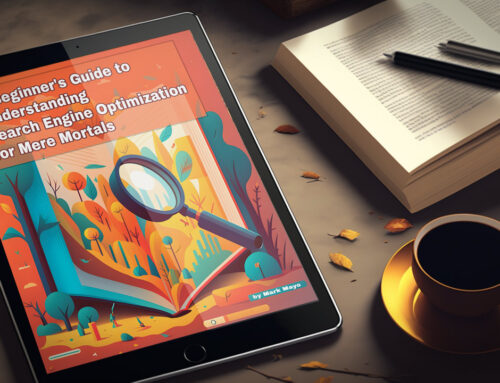Creating an effective content strategy involves designing pillar pages and managing keyword flow. Pillar pages are comprehensive resources that cover a particular topic in depth and connect to related, more specific content pieces (cluster content). This article will guide you through the process of designing pillar pages and managing keyword flow for optimal SEO results.
Pillar Page Design
Understanding Pillar Pages
- Pillar pages are long-form content pieces that provide a comprehensive overview of a specific topic.
- They serve as the foundation for your content strategy and help establish your expertise in a particular subject matter.
- Pillar pages contain links to related, more specific content (cluster content) that delves deeper into subtopics.
Steps to Create a Pillar Page
- Choose a Core Topic
- Identify a broad topic that aligns with your target audience’s interests and your business goals.
- Perform keyword research to find relevant, high-volume keywords.
- Identify Cluster Content
- List subtopics related to the core topic.
- Use keyword research tools to find long-tail keywords and search queries related to each subtopic.
- Create an Outline
- Organize the subtopics into a logical structure.
- Include an introduction, conclusion, and a table of contents with anchor links for easy navigation.
- Write Comprehensive Content
- Cover each subtopic thoroughly and provide valuable, in-depth information.
- Include multimedia elements, such as images, videos, and infographics, to enhance user experience.
- Optimize for SEO
- Use target keywords strategically throughout the content, including in headings, subheadings, and image alt tags.
- Ensure the page loads quickly and is mobile-friendly.
- Link to Cluster Content
- Add internal links to related cluster content throughout the pillar page.
- Encourage users to explore more in-depth content on the subtopics.
Managing Keyword Flow
Importance of Keyword Flow
- Proper keyword flow ensures that your content is easily discoverable by search engines and users.
- It helps in creating a well-structured content strategy and improves your website’s overall SEO performance.
Keyword Flow Best Practices
Maintaining an effective keyword flow is crucial for maximizing the SEO performance of your content. Here are some best practices to help you optimize keyword flow throughout your pillar pages and cluster content:
- Perform In-Depth Keyword Research
- Use reliable keyword research tools to discover relevant and high-performing keywords.
- Identify long-tail keywords and search queries that target specific user intents.
- Analyze competitor keyword strategies to uncover gaps and opportunities.
- Map Keywords to Content
- Assign primary, secondary, and tertiary keywords to each pillar page and cluster content piece.
- Ensure that the keywords align with the content’s topic, user intent, and your overall content strategy.
- Maintain Keyword Consistency
- Use consistent keyword variations across related content pieces to reinforce your topic relevance.
- Avoid keyword cannibalization by not targeting the same primary keyword in multiple content pieces.
- Use synonyms and semantically related terms to create a natural keyword flow and avoid over-optimization.
- Optimize On-Page Elements
- Incorporate target keywords into essential on-page elements, such as title tags, meta descriptions, headings, and image alt tags.
- Use target keywords strategically within the content body, but avoid keyword stuffing.
- Optimize Internal Linking
- Use descriptive anchor texts containing relevant keywords to connect related content pieces.
- Establish a clear hierarchy and logical flow between pillar pages and cluster content.
- Regularly audit and update internal links to ensure a well-connected content structure.
- Create High-Quality, User-Focused Content
- Focus on creating content that addresses user needs, questions, and pain points.
- Use keyword research insights to inform content creation and provide value to your target audience.
- Monitor Keyword Performance
- Regularly track keyword rankings, organic traffic, and user engagement metrics to gauge the effectiveness of your keyword flow strategy.
- Adjust your keyword targeting, content creation, and optimization efforts based on performance data.
- Stay Informed About SEO Trends
- Keep up-to-date with the latest SEO trends, algorithm updates, and best practices to ensure your keyword flow strategy remains effective.
- Continuously refine and update your content strategy to align with evolving user behavior and search engine requirements.
Final Thoughts
Designing pillar pages and managing keyword flow effectively are essential components of a successful content strategy. By creating well-structured pillar pages, you can provide comprehensive resources that cover a core topic in depth and connect to related cluster content. Optimizing keyword flow ensures that your content is easily discoverable and improves your website’s overall SEO performance.
Remember to:
- Choose a relevant core topic and identify related subtopics for your pillar pages.
- Create an outline, write comprehensive content, and optimize for SEO.
- Link your pillar pages to cluster content, forming a cohesive content structure.
- Perform in-depth keyword research and map keywords to your content.
- Maintain keyword consistency, optimize on-page elements, and improve internal linking.
- Focus on creating high-quality, user-focused content that addresses your audience’s needs.
- Regularly monitor keyword performance and stay informed about SEO trends.










